Who is not familiar with the spicy seasoning of ginger rhizoma, which has a spicy sharp taste and pleasant citrus aroma?! Nowadays, the root of ginger is an affordable product that can be bought almost in any store. But it turns out that the plant can easily grow at home, having a fresh and useful product at hand. In addition to his taste, there are more and more popular for the cultivation of exotion in decorative purposes, because the flowering of perennial delivers its owner a truly unforgettable spectacle. Unusual spectacular inflorescences attract attention to their novelty and extravagance. So, how to grow my own ginger on your site or in a flower pot? What care to provide many years of culture?
Ginger, Botanical Help
- Ginger is a perennial grassy plant from the eponymous family of ginger.
- The word "ginger" is translated as "horned root", which fully corresponds to the appearance of its uneven a lot of segmental rhizomes.
- The historical homeland of many years of thermal-loving culture is South Asia. At the industrial level, ginger is massively grown in Japan, China, Brazil, Vietnam, Australia and Argentina. Despite the tropical origin of ginger, the thermal-loving plant can be grown in our latitudes of a moderate continental climate.
- A modified underground escape, rhizome, is the main value of the plant. The fleshy tight root has a spicy, spicy-sharp taste and an unusually enjoyable lemon aroma. Often, ginger rhizome gets a sufficiently bizarre shape, reminiscent of her hand with fingers, then an unusual animal or a little man.
- The pressing root system of the urine type is growing from the root, as well as overhead shoots. The rhizome of ginger grows under the ground in the horizontal plane and almost at one depth.
- Stems Plants Strengthening, not pubescent, with long interstices. Height, adult and well-developed perennial can reach about 1-2 meters. Over the entire length, the stem is covered with numerous scales.
- Ginger leaves have a lanceal form with pointed tops. Externally, they resemble high grass with elongated and, often twisted into the tube, leaves (so-called. Pseudo stem).
- Ginger blooms for the 2-3rd year of life. Ginger flowers bloom on short sweat-shaped bluers at the beginning of summer and look very exotic. The co-shaped inflorescence reminds unusual contemporary concerns and is represented by a green cup of 5 cups with petals of purulent-brown or orange shades.
- The cultivation of indoor or household ginger in order to obtain a spicy root, as a rule, does not reach the phase of flowering herbal culture. This is explained by the fact that the harvest of underground shoots begins before the start of flowering, as soon as the above-ground part of the perennial starts to push.
- However, observing certain conditions for the cultivation of the exotion (described below), it is easy to wait for spectacular flowering of culture. At the end of the flowering, the fruit is formed - a three-grated box.
Ginger in the garden, photo
Ginger varieties and varieties
The family of ginger includes more than 140 types of ginger. A typical representative of the family is the type of "ginger pharmacy", which is most often cultivated in our country.
Starting from the 15th century, breeders have improved wild ginger and brought new varieties, trying to make it rhizome quiet, tastier and more.
Currently, there are quite many ginger varieties that differ in the smell, taste and color of the flesh.
- There are varieties with bright, greenish, brown, orange and even yellow with blue splashes of the painting pulp pulp.
- The fragrance varies from lemon to herbaceous, and sometimes not even a very pleasant smell of kerosene.
- The taste of ginger is always with the edge and only slightly modifies (according to the degree of harness and sharpness) in different varieties of perennial.
According to the processing method and the difference in flavoring qualities 2 trading groups of ginger are distinguished:
- Black ginger, which is also called Barbados, does not require special cleaning of the root from the peel. It is enough to pour underground escape with boiling water, and it is ready for use. This ginger group has a sharp, sharp and pronounced taste.
- White ginger also has the second name - "Bengal". This variety needs to be careful cleaning the peel with a knife or brush. Rhizome is characterized by a less pronounced burning and not so sharp aroma.
As for the varieties of ginger, most popular in our country, most gardeners prefer the following varieties of this spiced culture:
- Ginger "Zerumbet" (inflorescences resemble roses);
- Ginger "Ginger Torch" (little decorative inflorescences of pink color);
- Ginger "wonderful" (distinguished by a long period of flowering and bright red inflorescences);
- Ginger "Kasumunar" (white inflorescences, resemble orchid flowers);
- Ginger "purple" (characterized by thickened stem and decorative bluer);
- Ginger "Japanese" (stands out of fragrant inflorescences and early blossoms).
Landing ginger
Ginger is a rather unpretentious plant, but it is important to know the key features of its landing and the conditions for further cultivation, the non-compliance of which can lead to the death of tropical culture.
In a natural warm environment, the cultivation of ginger takes about one year, but in the conditions of our climate, the whole process will require approximately 9-10 months. This period includes the preparation and germination of rhizomes, its landing and harvesting.
In the northern regions of Russia, the landing of ginger is planned in a greenhouse, observing the key landing and departure rules described below.
Terms of landing of ginger
- Buy ginger rhizer for landing can be in any grocery store. You need to choose a young, healthy and large root that can be divided into several parts (segments). Skin covering root should be smooth and smooth, without damage, signs of rot or frnit sections. Too dried root for landing is not suitable. The landing underground escape should have "eyes" - the kidney, of which, subsequently, shoots will be formed.
- Before planting rhizome, it should be made of disinfection, placing a few hours into a weak warm solution of potassium permanganate (manganese). Such a procedure helps not only to disinfect planting material, but also stimulate its further growth. In the absence of manganese, it is allowed to hold the roots of ginger simply in warm water.
- After that, a large root can be cut into several parts, with the condition that each fragment has, at least two renewal kidneys. Sections of sections should be dried and sprinkled with activated carbon.
Agrotechnology landing ginger in open ground
- The place for landing the ginger is chosen well lit, sunny and protected from drafts and cold impetuous wind. At the same time, straight burning sun rays should not fall on a hot summer afternoon. In this regard, sometimes gardeners have to make artificial shading for this period. It will be better if the garden with ginger is planned to schedule on the south side of the site with openwork feud.
- The correctly selected primer for ginger is of great importance in the general process of cultivation of perennial. The basal is considered a loose fertile mixture of turf, sand and leaf humus in a 1: 1: 2 ratio. Dense, stagnant and impermeable soil will provoke the rotting of ginger root. Good results show a pre-fertilized soil by organic, for example, with overwhelming dung.
- Before boarding, the root of ginger must be germinated in a warm room in advance. For this, it is planted in containers in winter (in January, February). In the open ground, planting material is transplanted in the second half of spring, when completely passes the threat of return freezers. Experienced gardeners prefer to gradually adapt the plant to street conditions and first (in March) postponed publications with a plant in a greenhouse, and then (in May), the ginger transplant to a permanent place. Landing the root of ginger in open soil involves the presence of air temperature 20-25 0C because already at 18 0The plant falls into the hibernation and stops further development.
- Considering that the root of ginger is not growing deep into, and styling, it is planted horizontally, not deep, in the upper surface soil layer.
- Before planting the root of ginger prepare a landing pit (or grooves), a depth of no more than 8-10 cm, but with a mandatory drainage layer.
- For this purpose, 1 cm of fine gravel or rubble pumped onto the bottom of the pits (groove), then 2 cm of river sand are sprinkled from above, after which a little soil mixture is added.
- In the prepared moisturized trench, ginger roots are stacked so that the kidneys are on top. After that, the trench is falling asleep by the remaining soil (3-4 cm). In the case of landing several instances of ginger, the interval between the roots is observed about 10 cm.
Agrotechnology landing ginger at home
- Select and cook the landing material for landing of ginger at home is necessary as well as when landing in open ground.
- The root (or fragment of the root) is planted in the spring, into a wide shallow container with a mandatory drainage layer at the bottom. Otherwise, water can be stated in the landing container and provoke the rotting of the root.
- The soil for planting room ginger can be prepared independently or buy a ready-made soil mixture with a high phosphorus content and pH level 5-7. Any mixture is suitable for planting vegetables or roots.
- Crop the root of ginger is shallow, covering the soil for 2-3 cm. After 2-2.5 weeks, the first green shoots of ginger will be shown on the surface of the earth.
- The ginger landed in the pot needs regular, but moderate, watering, periodic soil fertilizer and good lighting. In addition, the room maintains temperature regime in the range of 20-25 0WITH.
- In the hot period, the ginger pot is placed on the balcony, terrace or in the garden, with rarefied light. Plant requires good lighting without direct sunlight.
- If the ginger is grown as an exotic decorative plant, it is planted into a smaller pot in terms of volume and do not dig up for the winter, but leave in the ground before the onset of spring. In winter, the "sleeping" roots need minimal irrigation, supporting the ground in a slightly wet state. On the 2-3rd year of development, the plant blooms.
- If there is a need to transplant ginger, it is necessary to do it carefully, as the plant does not tolerate the transplant. Ginger transplant in spring. If the ginger is transplanted into the indoor pot, the soil mixture is completely updated.
Ginger care
The rules for the care of ginger, both in open soil and in room conditions, are largely similar and depend on the preferences and defense of tropical spiced crop.
Consider the main agrotechnical measures to care for ginger.
Watering and loosening ginger
- Ginger is considered a fairly moisture plant, so it is important for it to provide regular watering. At the same time, in no case cannot be allowed excessive moistening or moisture stagnation. Given the specifics of the structure, the root system (in the form of a thickened fleshy underground escape) is painfully reacting to the excess of the humidity level by reducing the root.
- The irrigation rate varies depending on the cultivation conditions and the seedling period. So, at first, after the landing and before the appearance of young shoots, the plant is watered more often and more abundant. As the plant grows - watering reduce. In addition, watering increases into a hot dry period, and in cool weather - reduce. The main criterion of sufficient irrigation is slightly moistened loose ground around the plant.
- For irrigation, use soft dodged water. Autumn reduce watering to ensure the maximum weight range of rhizomes of ginger and preparing the plant for the winter rest period.
- After irrigations to provide sufficient aeration, ground frills. It should be done carefully and not deeper than 1 cm, given the occurrence of shallow rhizomes of ginger.
- Responds favorably culture on irrigation or spraying from a spray. The procedure is performed in the early morning or late afternoon to avoid the appearance of burns on the plant.
Top dressing fertilizer and ginger
- Ginger, like any other plant, with favor the additional fertilizing and fertilizing.
- In spring, the first stages of the growing season, every 10-15 days in open ground make organic fertilizer, such as a weak solution mullein (1:10).
- By the end of the summer, in August, the organic is beginning to alternate with potash fertilizers, helping to form good ginger tubers.
- In the day before the flowering, it is advisable to add phosphorus-containing fertilizers to the soil.
- It is not worth exceeding the dosage of recommended fertilizers and get involved in too often their contributions, as the fleshy rhizome, which will later be used in food, quickly absorbs and accumulates all nutrient elements.
Fighting diseases and pests of ginger
- Ginger is considered a highly resistant plant to various diseases and pests.
- Occasionally, in a arid period, on the leaves of the plant can parasitate the web tick. The insect sucks the juice from the leaves, on the leaf plate there are stains of yellow and the leaves begin to dry. To destroy the pest, it is important to organize a regular watering and spraying (sprinkling) of the plant. The wet microclimate helps to get rid of insects, but to destroy their larvae will have to resort to chemicals. Processing should be carried out 2-3 times with an interval of 7-10 days.
- As for ginger diseases, the plant can turn yellow and dry the leaves, to heat the roots, but the causes of such trouble are associated, most often, with violation of the rules of culture care. Such problems can be caused by incorrectly selected soil, non-compliance with the recommended irradiation rate, too dry air in the room or direct exposure to sunlight.
Preparation for the winter of ginger
- There are two options for wintering ginger: in the first case, the ginger root is digging, dried and used for cooking dishes (watch the section "Collecting and storing a crop"); In the second case, ginger continue to grown in a flower pot as a decorative culture, providing him with a temporary winter period of rest.
- The period of rest for the plant involves the observance of a number of conditions: reduction of the irrigation rate to a minimum (only so as not to cross the soil), temperature regime in the range of 10-15 0S. In the spring, to stimulate the growth and development of the plant, the pot with ginger is exposed to a warmer place, increase the norms of irrigation, renew feeding (use fertilizers for flowering cultures with increased potassium content) plants.
Ginger collection and storage
- Collect the harvest of ginger should follow the last 9-10 months (provided that the root was planted in January-February to germination, the harvest fee falls on the first half of the fall). You can try to dig up the rhizome of ginger and earlier, for example, in summer, but then it will be very insignificant in size, although it is completely suitable for use.
- Some gardeners are not satisfied with the size of the rhizomes of ginger dugged in the fall, and the plant has been transplanted earlier (in August, when the ground part has not yet shuffled) into indoor pots for further reking. Usually, after a winter period with regular irrigation, feeding and showering, the spring rhizome becomes more impressive sizes and digging it for further use.
- The harvest timing is determined by the appearance of the above-ground part of the plant. When the stems and leaves begin to lower, dry and eventually fall apart on dry parts - you can safely dig up the edible roots of ginger. In the period when such metamorphoses occur with the plant, it is not watered, they do not spray and do not fertilize.
- The roots neatly dig out from the soil with the help of a shovel, trying to damage the meaty "root" as possible.
- Then the rhizomes are cleaned from the soil, remove the apparent roots and dry out in the fresh air for several days.
- Store the harvest in a dark and cool place, with a temperature not higher than 2-4 0C. For this, a refrigeration compartment for storing vegetables, a basement or cellar is suitable. If the ginger is stored in the refrigerator - it is placed in a paper package where it can save a fresh view for several months.
- It is possible to freeze the root of ginger and stored in the freezer to six months, however, most of the gardeners believe that in this form, the plant will partially lose its beneficial properties and loses taste.
- The storage of ginger in dried form is also allowed. For this, the purified root is cut with thin slides and dried. The dried spice will have a sharper taste and sharp flavor.
Ginger breeding
- The ginger plant multiplies, as a rule, a vegetative way - the division of rhizomes to pieces (on "jumpers").
- It is important that each sliced \u200b\u200brhizome segment had the so-called. "Eye" - kidneys, of which will develop young shoots subsequently.
- The technology of training the planting material and directly landing it into the soil is described above, in the "Landing of Ginger".
- The seed method of reproduction is not used to breed ginger at home, since the plant under these conditions does not have time to form seed material.
Ginger, Plant Application
- Ginger root is a source of fragrant spicy seasoning, widely used in cooking (for baking, cooking salads, sauces, marinades and second dishes). In addition, Ginger is indispensable in the preparation of many refreshing drinks: kvass, tincture, cocktail, tea, etc.
- It turns out that not only the root is suitable for food, but also young ginger sprouts. Green plants stems, to taste resembling, "Spicy Mandarin", crumble in salads, add to sauces and marinades.
- Rhizer ginger has long been used to obtain medicines. Folk Medicine applies fragrant spice for the treatment of many diseases: from ordinary cold to serious ailments. Ginger normalizes metabolism, improves appetite, activates digestion, increases immunity and has a general tonic soothing effect. At the same time, there are a number of contraindications in which the use of ginger is extremely undesirable. Do not take ginger in gastrointestinal diseases and during pregnancy.
- To get rid of the problems of the oral cavity or unpleasant smell of mouth, quite regularly chewing a piece of ginger root. Ginger tea perfectly helps with colds and headaches. The "miraculous" root dilutes the blood, improves the work of the brain, removes muscle and articular pain.
- Actively participating in the processes of fat metabolism, ginger contributes to the loss of overweight and reduce blood cholesterol.
- Essential oils are obtained from ginger, widely used in cosmetology and pharmacology. Also, ginger is considered an excellent aphrodisiac that stimulates sexual attraction and enhancing male potency.
- It looks spectacular and exotic looks like a ginger during a flowering period, so many landscape designers use a tropical culture for the design of the garden, a household plot, a park zone or as a pot culture.
Ginger, Useful Tips
- Before use, the root of ginger must be cleansed from thin skin. Do it, scraping the skin with a sharp knife.
- Grind the ginger to the puree, you need to use the pestle and mortar. The use of the blender will turn the pulp of ginger into too fibrous mass. You can also grind rhizome with a small grater.
- It is convenient to use ready-made frozen ginger ice cubes ready to prepare. To do this, the grated ginger lay out according to the molds for freezing ice, poured cooled with boiled water and frozen.
- The finished ground ginger sold in the store does not have such a bright taste of perception and aroma as the fresh root of ginger.
- Ginger is perfectly combined with such seasonings and spices as: turmeric, cardamom, coriander, nutmeg, carnation, cumin.
Thus, it is possible to grow ginger in different ways: in the open soil or in the room pot, to obtain delicious seasonings from the root or as an exotic flowering decorative culture.
The landing and care conditions for this plant suggest knowledge of key agrotechnical events that will master any, even a novice gardener.

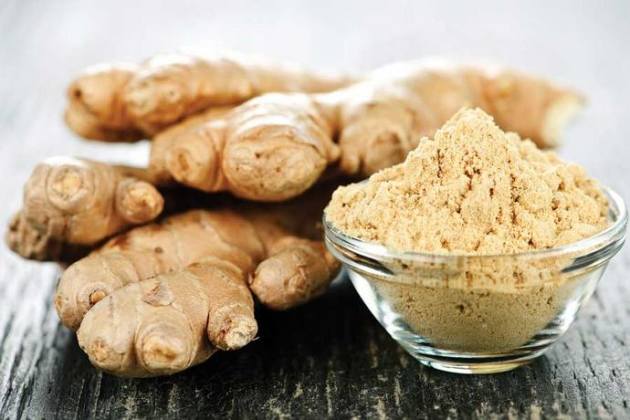
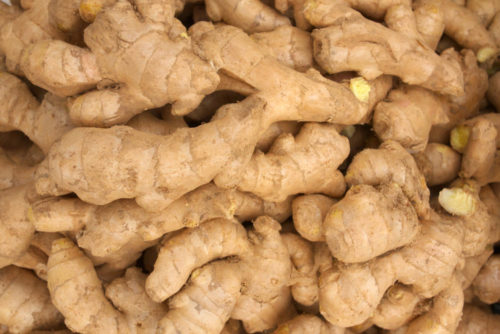
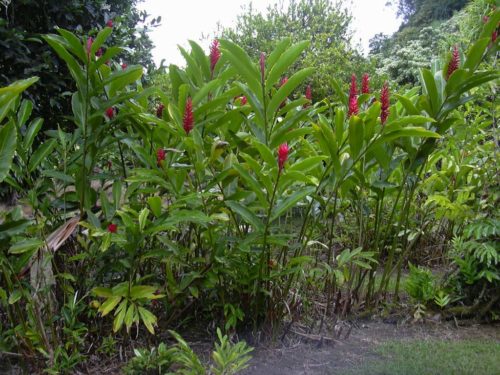
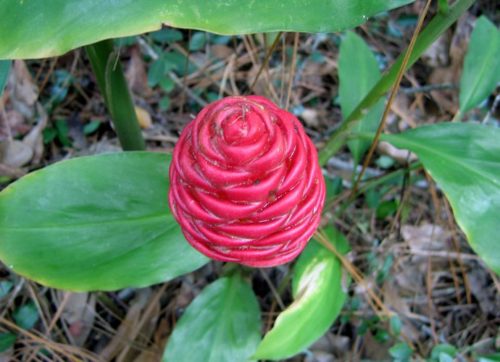
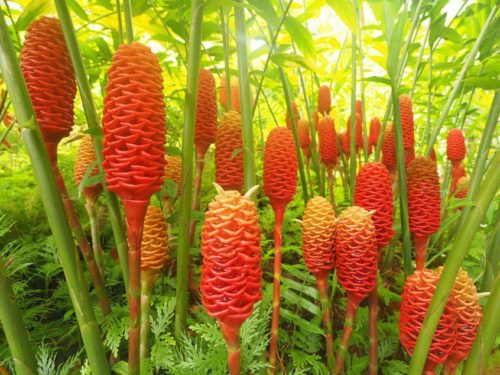
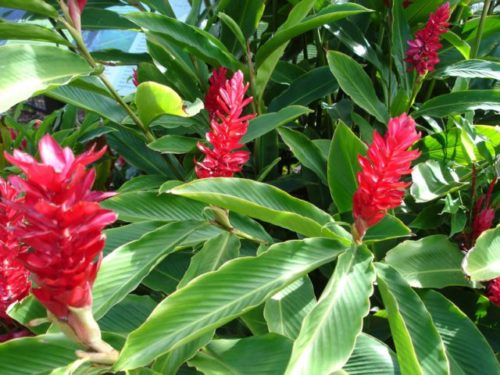
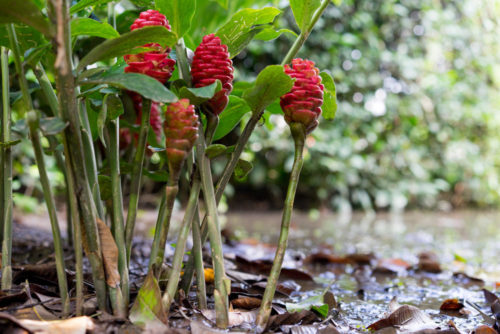
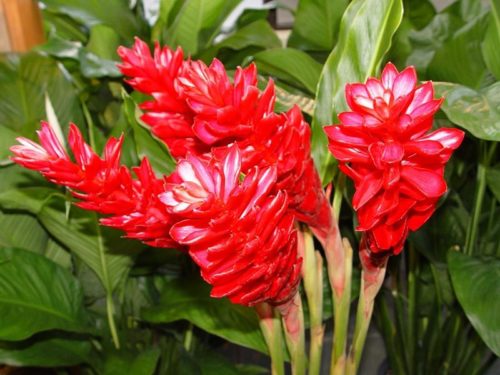
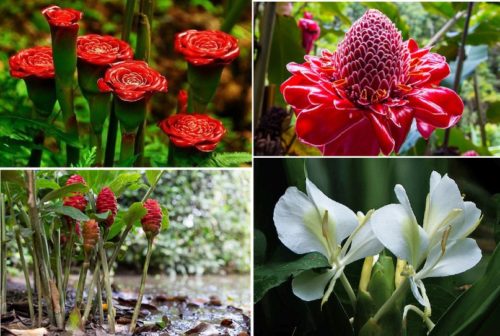
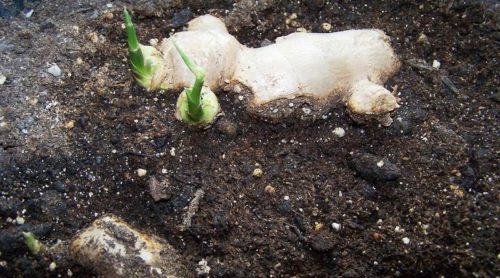
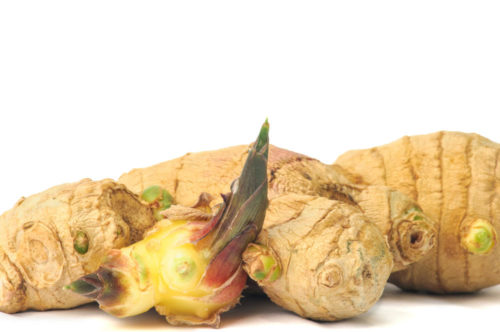

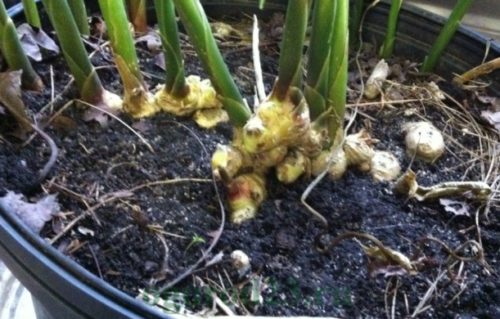
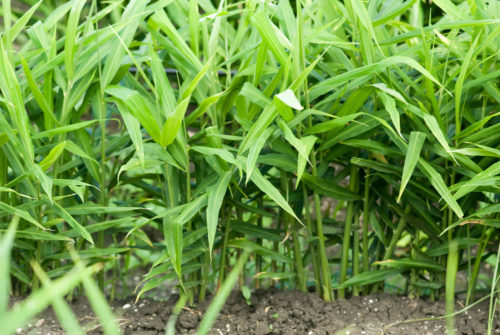

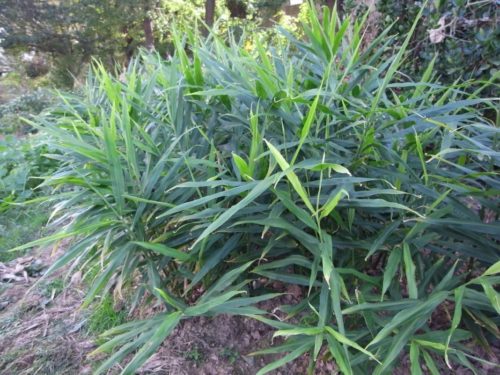

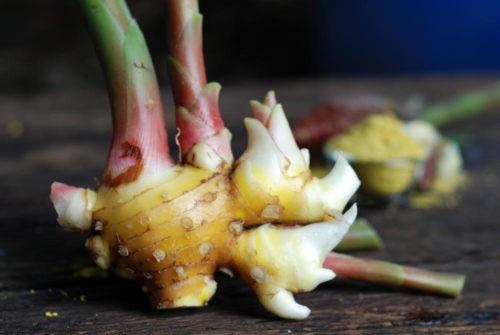

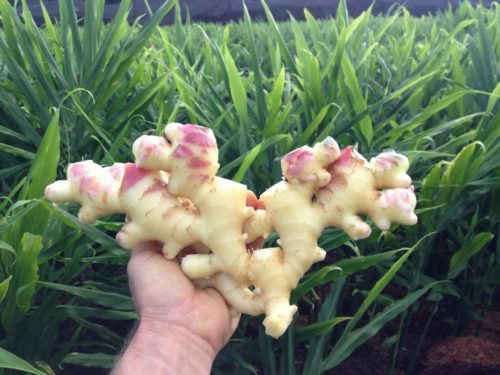
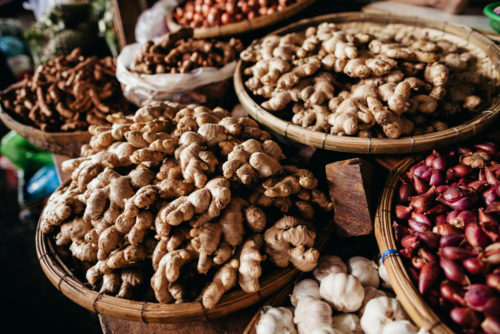
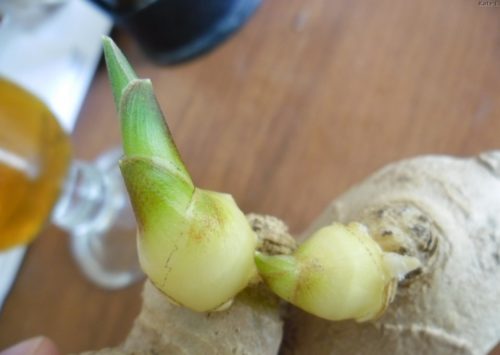
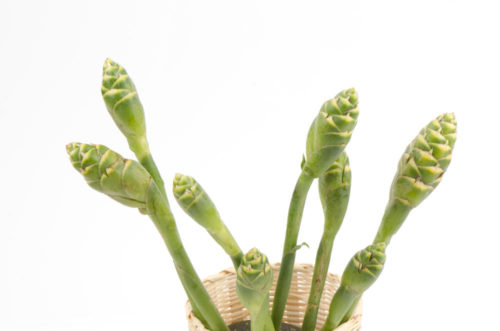
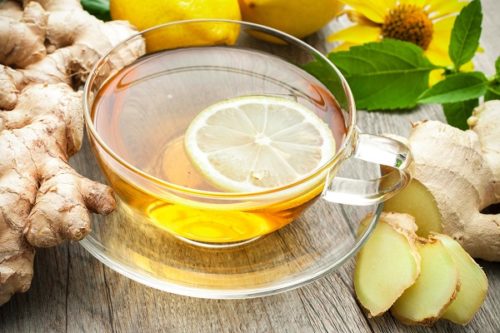
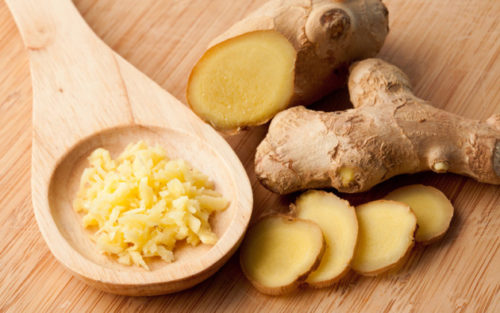
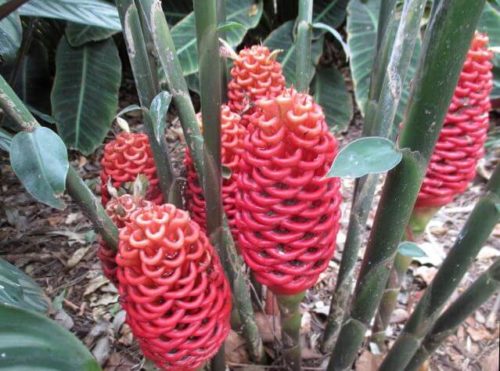
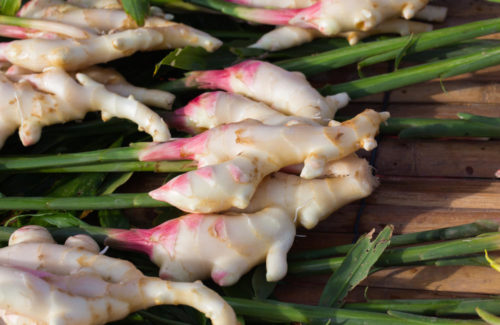













 Start a discussion ...
Start a discussion ...